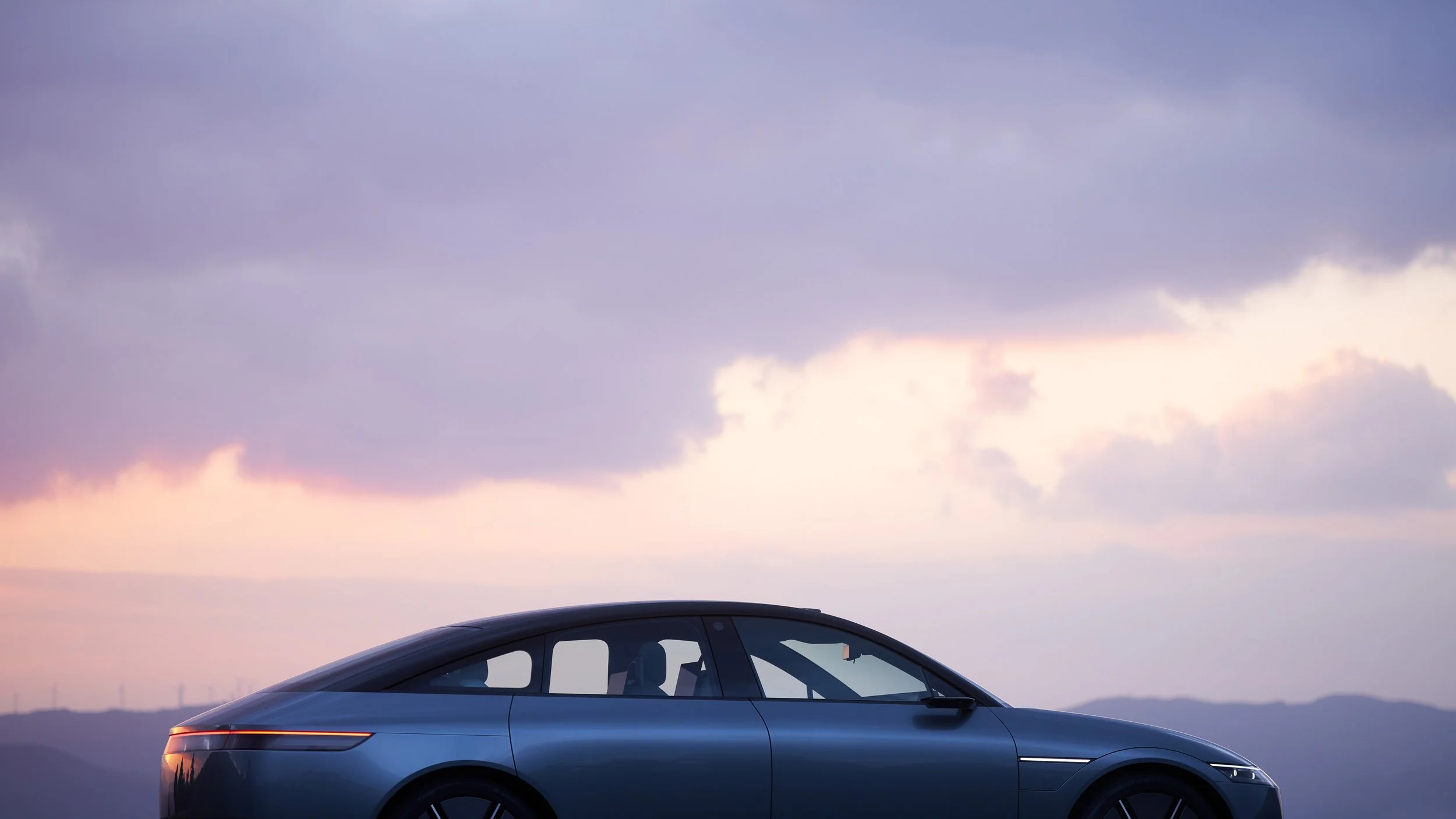AFEELA EV Prototype
Here’s a look at the first concept car by AFEELA, a Mobility Tech Company formed through the collaboration between Sony and Honda. This creation explores an emphasis on software, networks, and user experiences. It has been brought to life through the Media Bar, an immersive entertainment system, captivating "smart hospitality" functionalities, and an abundance of meticulously integrated sensors.
Media Bar
This intriguing idea reveals a way for vehicles to establish external communication, giving a sense that the car is being treated as a true digital product. It makes you wonder about the activation triggers and information display patterns of the Media bar. Does it provide timely reminders about low fuel levels as one approaches the car? And does it elegantly showcase the battery status upon exiting the vehicle? It feels like there’s quite a lot of potential here outside of reskinning your car through a companion app, and it will be interesting if this develops further.
Entertainment
Featuring Sony's seamless integration of a fully immersive entertainment system, it feels like a mobile cinema room. But this type of experience makes a lot of sense as we're moving towards autonomous driving Level 3 and above (see 6 Levels of Driving Automation).
Personalisation
AFEELA also boasts impressive ‘smart hospitality’ capabilities, such as automatically unlocking and opening the door as you approach. Apparently it can also recognise who you are and adjust the interior settings to your preference.
There’s mention that AFEELA is exploring opportunities to merge virtual worlds with real worlds through collaborations with Epic games and Unreal Engine. But not much is revealed as yet besides theming of interfaces.
Sensors
AFEELA notes “Our prototype is equipped with a total of 45 cameras and sensors inside and outside the vehicle, together with 800 TOPS of maximum computing power for ECU”. Interestingly, examining car specifications is becoming akin to examining the complexities of a state-of-the-art computer system.
On a side note, an intriguing trend has emerged in the form of U-shaped steering yokes with dual hand grips connected to a central hub. While commonly associated with aviation due to their ability to operate within a limited turning radius, steering yokes have traditionally been deemed impractical for automotive vehicles, which typically require full rotations. However, with the increasing integration of technology into cars, this notion is changing as computers can now interpret the driver's inputs and enable faster front wheel rotation as the yoke approaches its limits. Consequently, we may witness a resurgence of steering yokes reminiscent of their prevalence in conceptual car designs of the 1970s (see our previous posts: retro dashboards and retro digital dashboards by Daniel Lazo).


















